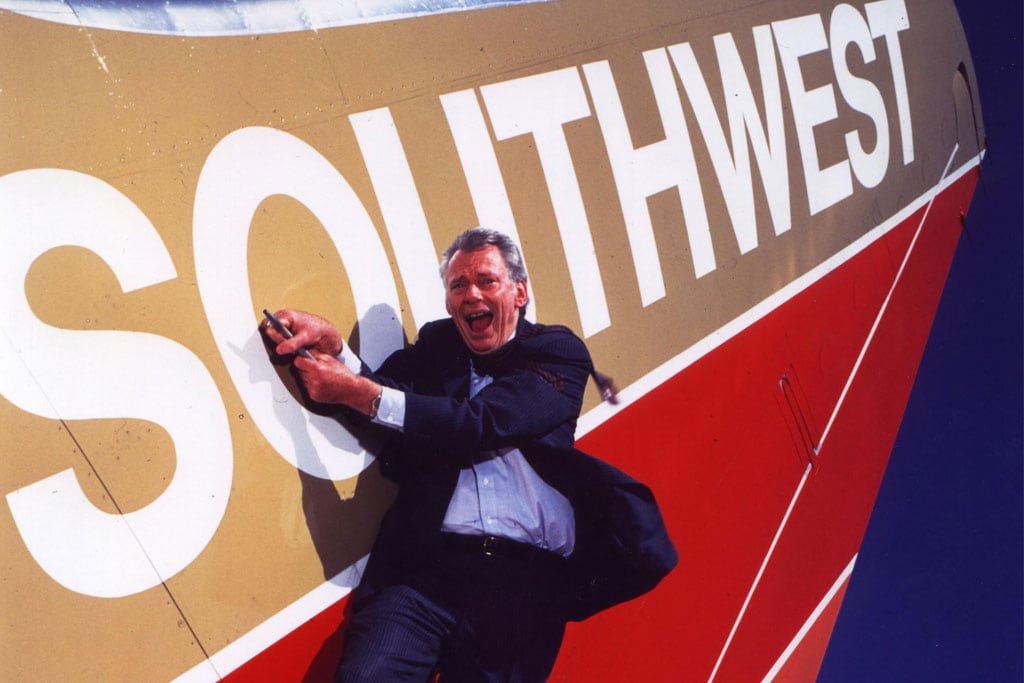Original Disruptor Southwest Airlines Survives on Ruthless Business Savvy

Skift Take
Southwest has survived by being different. That gets harder, but the lessons of its past success may help define its legacy. The Texas-based airline is one of the subjects in Skift’s recent sixth anniversary book, For the Long Haul, Lessons on Business Longevity, whose chapters we are excerpting for you here.
Southwest Airlines began operations humbly in 1971, with four planes serving three cities in Texas. Since then, it’s grown to be one of the biggest airlines in the United States. It’s now also the most consistently profitable — unlike nearly every other major carrier, Southwest has never entered bankruptcy, or even come close. And it has accomplished all that while remaining relatively well-liked by its employees and customers.
There’s the official Southwest tale of how that happened. The airline likes to say it kept things simple and focused on its customers and their experiences more than flashy offers and deceptively low ticket prices. And it always likes to say it puts its people before profit.
The airline also garnered plenty of goodwill over the years thanks to its former CEO, the tell-it-like-it-is, whiskey-swilling, Marlboro-smoking, all-around good guy Herb Kelleher. What he contributed is something most big corporations could only dream of cultivating.
Like most tales, there’s truth to the official Southwest story, but you don’t become the largest domestic airline in the world’s largest air market by playing nice — or, at least, niceness isn’t enough. Undergirding Southwest’s friendly image is a ruthless business savvy that has helped it dominate large swaths of the continental United States, often becoming the only viable airline in town.
Turning Model Upside Down
Southwest remains a healthy company, but analysts say it might be resting too much on its lore: When the airline started, simplicity, friendliness, and low prices were a radical innovation. “The company was very much a maverick when it started, and it’s actually become very conservative,” says Seth Kaplan, managing partner at the industry magazine Airline Weekly. “That’s probably saved them from getting into fads and hurting themselves, but it also prevents them from competing effectively these days.”
When Southwest took its first flight in 1971, the airline industry was expensive, the province of the upper class. Someone who wanted to travel between, say, St. Louis and Kansas City, or Houston and Dallas, would usually drive. Back then, Southwest wasn’t competing against legacy carriers for passengers, but instead marketing toward people who rarely or never took airplanes. The approach made the airline revolutionary.
Read About the Secrets to Business Longevity in Skift's New Book, For the Long Haul
“We were a bit of a disruptor,�
